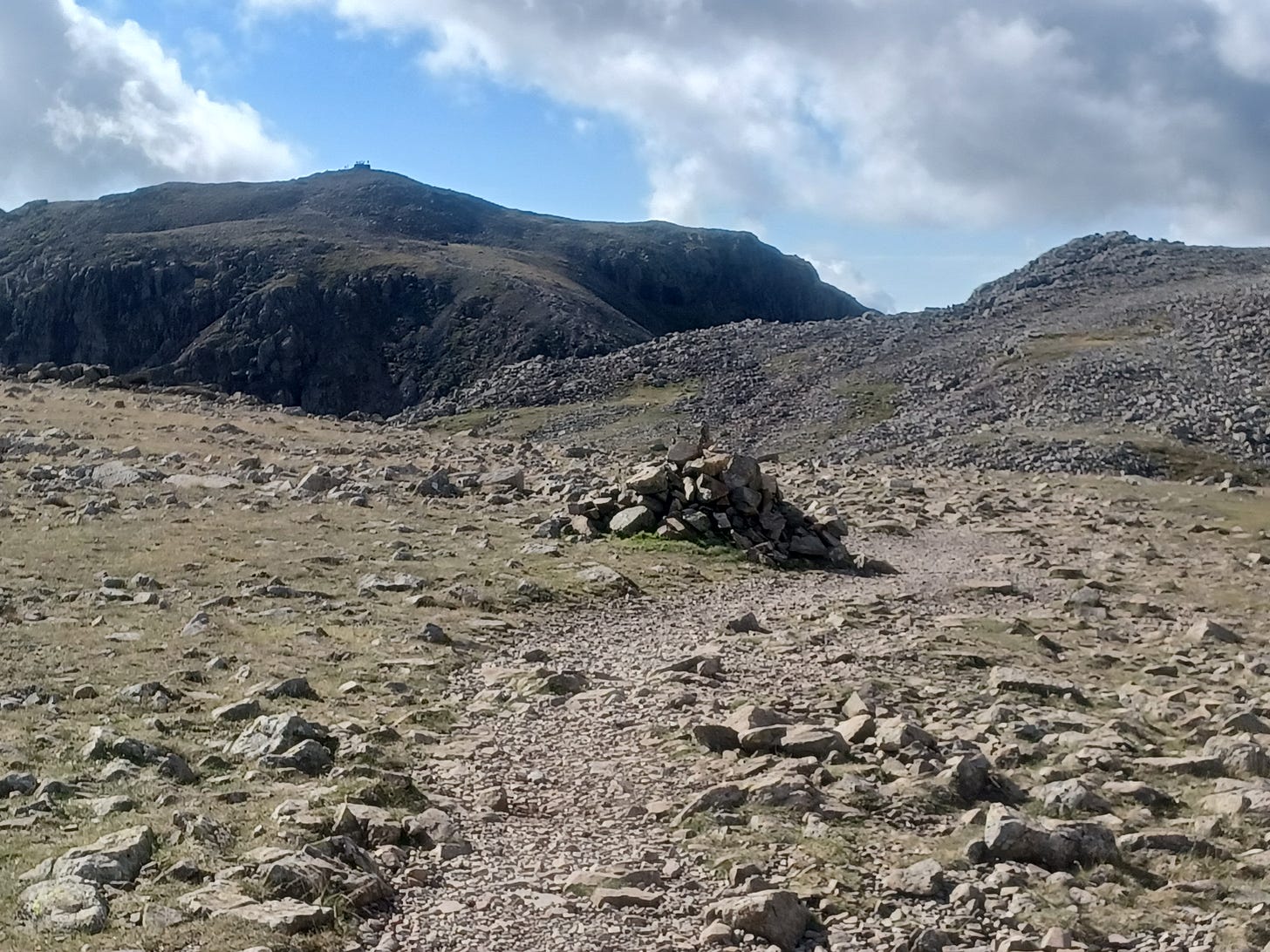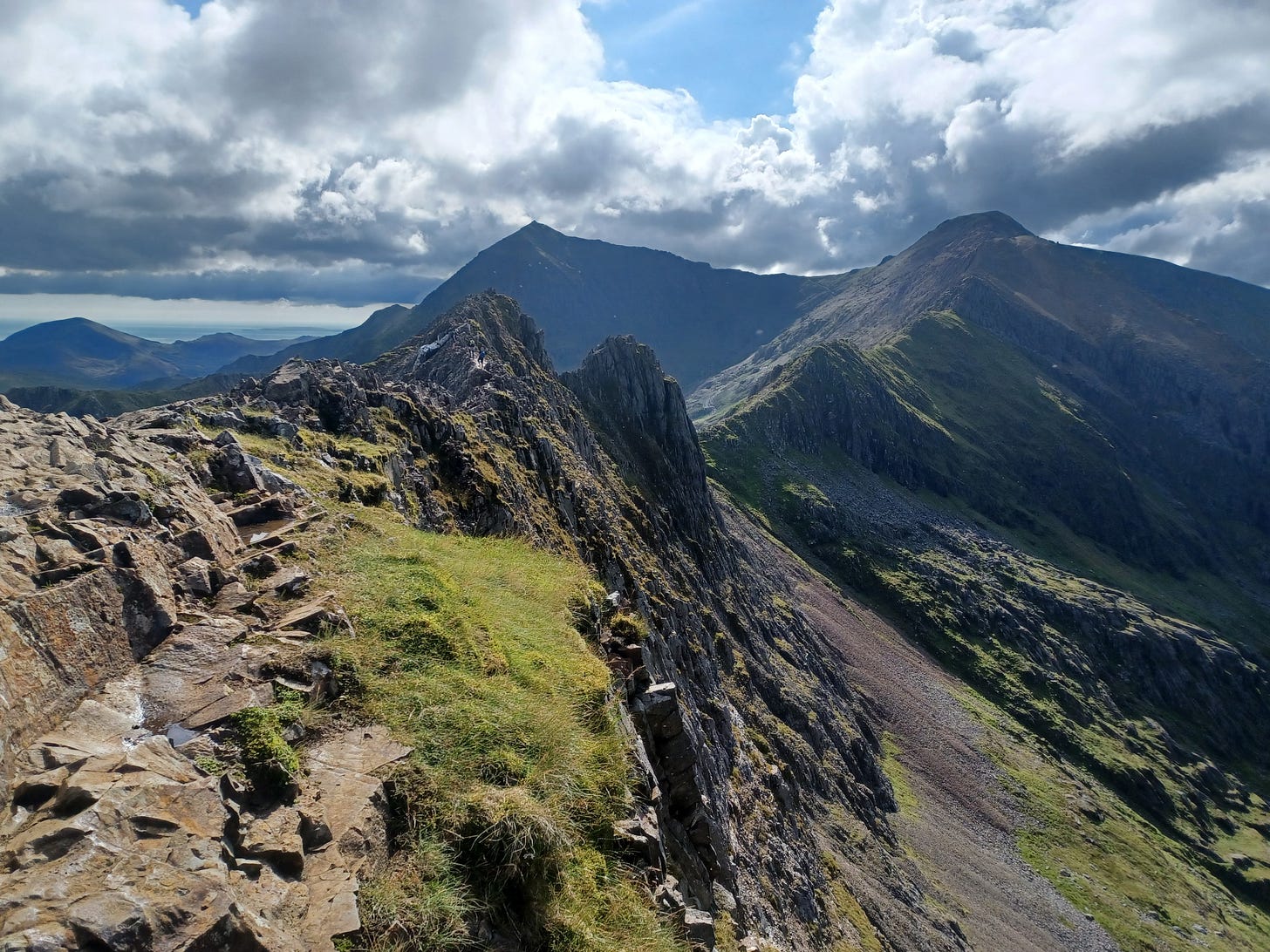I was a maths nerd long before I was a runner, so perhaps it’s not surprising that I think of running in terms of numbers. Also, runners love data, right?
This week, I’ll break down some of my favourite “measures” for long-distance running, in particular:
The well-known 80/20 rule for training
The ratio of elevation to distance
A way of calculating “total effort”.
Just have fun
Let’s start with the 80/20 rule. This is basically that 80% of your running should be at a low intensity.
‘Low intensity’ isn’t necessarily about pace, as that will vary from person to person, but an easy way to think of it is ‘chatting pace’, where you can hold a conversation. The 20% is then harder training, tempo runs, intervals etc.
There is a lot of backing for this being a great way to train. It was put forward by Dr Stephen Seiler of the University of Agder, Norway, pinpointing an 80/20 split within a hierarchy of endurance training needs. The 80% allows you to build aerobic fitness and efficiency without making you too tired. Then you get the most out of the 20%.
My take on this is that it permits you to treat 80% of your running, even when training for a big, scary goal, as fun. How freeing is that? You don’t need to beat yourself up about overall pace, splits, or anything. Just go and have a good time.
That could be a solo run of your favourite route, or a chatty run with friends. Relax - pushing too hard in the 80% will be to the detriment of your focused training sessions.
On those ‘focused training sessions’ - let’s pay particular attention to the ‘focused’ part.
These days, you can find any number of session plans online or hear about fabulous workouts that will revolutionise your running. But it’s better to keep things simple, and specifically targeted for you.
Through a training block, you might want to work on your running on technical ground, speed endurance, or strength for ascent. It probably won’t turn out well if you try them all at once.
I also think that longevity in running as a sport depends on following the 80/20 rule and making the most of it, both fun and easy. If it’s not easy, then the risk of injury or burnout starts to increase. If it’s not fun, then you can lose inspiration. This is one of several reasons why I try to encourage people out onto the beautiful trails and fells, rather than getting into that space where those high volume miles just need to be churned out on the same old routes.
The one caveat I’d give to this “just have fun” message is that, if you have a big goal in mind, you do need to keep an eye on whether your low-intensity running is relevant to your goal. For example, if you’re aiming for a big mountain race, then flat miles on a canal towpath are going to lead to a nasty surprise. This is where the other measures come in.
Elevation: distance ratio
I have found the elevation: distance ratio to be the single best indicator of whether training is appropriate. If you were training for the Bob Graham Round, which has approximately 80m of elevation every km, it’s clear which of the below examples is most relevant:
Manchester Marathon - 42km and 54m elevation: approx 1m/km.
Grindleford Gallop (flowing trail race in the Peak) - 34km and 850m elevation: 25m/km
Borrowdale fell race: 27km and 2000m elevation: 74m/km.
If you want to judge your pace, something I have found very useful is to estimate the ‘total effort’ of a run, which depends on both the distance and elevation. There are various formulae you could use here, but a simple one is to count each km or 100m ascent as a “unit”. Applying this to the events above, you will see that the marathon has about 42.5 units (42+0.5), Grindleford also has 42.5 (34+8.5), and Borrowdale has 47 (27+20), despite being the shortest.
This fits with experience - I’ve heard many people say their Grindleford Gallop time is very similar to their marathon time. And I would be flabbergasted if anyone could run the Borrowdale Fell Race faster than a flat marathon.
It also explains why some people can get caught out by mountain races or challenges. The Dragon’s Back Race is a great example.

Day 1, in northern Snowdonia, has approximately 80m ascent per km. People ALWAYS get timed out on this day, needing more than the allowed 15 hours to run around 50km. I suspect they have underestimated the impact of including almost 4,000m of elevation in that distance, and what that will mean for both effort and pace.
Looking at effort - the Dragon’s Back Day 1 and Borrowdale fell race are both relatively short and very steep. People not used to running in the mountains might look at the distance and wonder how hard it can be, ignoring the elevation. But this system allows you to judge total effort by attributing effort to both the lateral distance and height gain.
And then pace - it follows that your pace depends on the effort involved, not just the distance. You can work out how many effort units per hour you can do, and bear in mind this will reduce as the overall effort goes up. I have used this in a race setting - I know I can maintain a certain rate of units/hour for a given time, so if I’m exceeding that, I need to slow down. That seems more useful than simply distance per hour, which varies hugely due to steepness.
Total effort
Finally, let’s return briefly to the 80/20 rule. If you spend 80% of your time on fun, relevant training, you will also build experience and be able to diagnose what specific training will help you.
It might be coping with long, tough climbs, technical descents, or picking up the pace on the flat. This informs how best to spend the 20% of your time, such as utilising a hill rep session or longer tempo runs.
Done right, the 80% complements the 20% and vice versa. The majority of your time (ideally) is spent having fun, and the training is well-directed and proportionate.
Richard Kendall is a father of two, a keen and highly accomplished ultra-distance mountain runner and coach. He is based in the Peak District. In his spare time he is a civil servant.
targetultra.com







I embraced this today Richard and enjoyed my easy 7k run (some walk) with 170m climb. Nothing is flat near my part of the Peak District!
The 80:20 is a great framework to lean on! Thanks for sharing this!